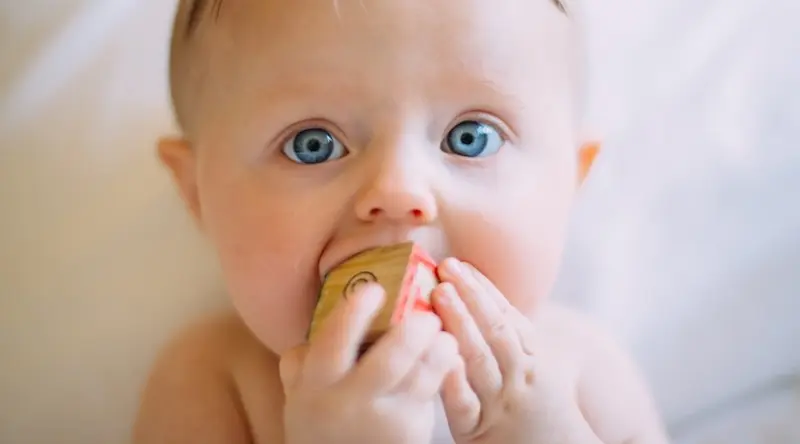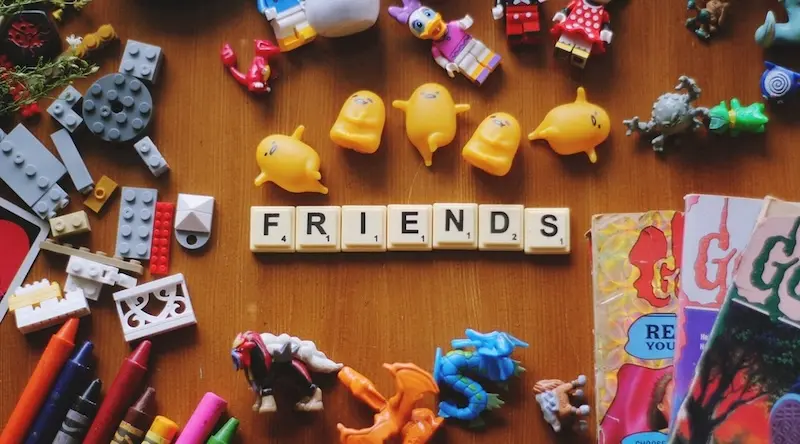settings
children
With Famly since
Being reflective is a consistent sign of an any outstanding nursery.
Evaluating your setting isn’t easy, and it can be daunting to think about collecting all that feedback. But Ofsted are very clear that collecting feedback and assessing your nursery regularly is a crucial part of providing quality provision.
Completing a Self Evaluation Form (SEF) is just one way to do this. It’s by no means the only way, but it’s a great starting point to look at what Ofsted expect you to look at when you’re assessing your setting.
What is the SEF?
Introduced in 2013, the Ofsted SEF is simply a way to evaluate your setting. Ofsted have always considered self-evaluation important, and going through the SEF will help you to find your strengths and look for areas of improvement.
In order to get a complete picture of your setting, you need to involve feedback from parents, carers, outside agencies, staff and the children themselves. Inspectors can also use it to plan their inspections, and get a good idea of the setting before they visit.
Ofsted recommends you update your SEF at least once a year, but many nurseries look at them more regularly than that.
But the most important thing with SEF is understanding what it’s not….

Do I need to do it?
This is a definite no. The Ofsted Myth Busters Document makes it very clear that you are not expected to do one.
Having said that, Ofsted do expect you to be working through some of the processes in the form. That is, you need strong feedback and a constant process of self-evaluation.
Ofsted generally think that settings are best placed to recognise their own strengths and areas for improvement. So while you don’t have to fill out an Ofsted SEF, the thought is that having a strong self-evaluation process and assessment gives the inspectors a great starting off point. It sets the scene for your inspection.
Getting staff to contribute
Of all the feedback you need to make a quality self-assessment, the feedback from your staff is crucial. Unlike a short questionnaire to parents, or the time you might spend in the room to get ideas off the children, the staff need to be absolutely central to your assessment.
They are on the floor every day, and they are the ones who will be able to take action and work on the areas that need improvement.
But finding fresh ideas to get them to contribute is difficult for many managers. Here are some ideas to get you started:
- Run specific SEF Meetings. Talk about what you will do between now and the next meeting and check back in on how you did with your targets from last time. Delegate tasks to make sure you know who is responsible for what.
- An anonymous feedback box can be a powerful way to get honest, regular feedback.
- Ask questions regularly, and informally. Self-assessment should go beyond meetings.
- Use time in 1-on-1s to get each person’s individual viewpoint.
- Foster an environment of honesty and openness by reacting positively to new ideas, and criticism. Take it with humility and an open-mind and you will encourage more (and better) ideas.
- Questionnaires. Keep them simple and use them as starting point for discussion. People are more likely to contribute something useful when you go beyond the questionnaires and discuss the ideas in person.
- Make a personal Ofsted SEF for each room by asking your room leaders to complete their own inspection.
- Create an ongoing process by putting up charts in the staffroom where staff can contribute to ideas ad-hoc.

Completing your SEF
You need to evaluate your nursery in a way that suits you. It could be that the traditional Ofsted SEF works best for you, or it might be that you want to create a tailored self-evaluation using action and development plans.
Either way, thinking about each section included in the Ofsted SEF is going to be a good way to think about the sort of things they think will want you to cover in any assessment.

How to be outstanding: The Ofsted Inspection Guide
Renewed and updated for 2023: Get ideas, tips, and advice on what it takes to be outstanding from Early Years managers and Ofsted’s Phil Minns and Wendy Ratcliff.
1. Describe your setting
The very start of your Ofsted SEF is all about your setting. Walk through the main characteristics and ethos of your setting, before going into some detail around the culture and backgrounds of the children you look after.
What should I include?
To start with, you’ll want some very simple details on the building, area, and organisation of your provision. You can go into the outdoor space that you have, the places you have available, and when you operate.
From here, you’ll also want to briefly go over the staff you have and what role they perform, before going into some more details on the special features of your provision.
The Ofsted SEF guidance also mentions that you should consider any issues that are helping or preventing the smooth running of your setting. A lot of that ends up being focused on staff, whether it’s the training opportunities you have, or the difficulties you face with recruitment.
Any tips?
- If you’re completing your Ofsted SEF online there’s no inbuilt spell-checker. Instead, complete it in a Word Document and transfer over or use the Grammarly Plugin.
- The summary of your provision is where you’ll want to really spend some time getting into your ethos, teaching philosophy, and specialities. This context is really important to give to an inspector.
- Bullet points are your friend. You don’t need a whole paragraph describing your building access. This’ll give you more time to focus on the most engaging points of your provision.
- Add evidence to backup your claims, even in this early section. That might be examples from your provision or policies that you have in place.
2. Another view of your setting
Now, we move onto what everyone else is saying about your setting. This means the children and their parents or carers, as well as any other professionals you work with, including your staff.
What should I include?
You can start by detailing the ways that you are collecting feedback. Again, bullet points are your friend here.
Talk about how parents directly work with the nursery to improve your care, as well as some examples of where you’ve included their feedback in changes that you’ve made. This goes for the children too. What changes have you made to the provisions or activities based on the children’s interests?
Finally, it’s all about what you do with outside agencies. Your local authority, quality assurance schemes, advisors and consultants. Any work with these should be included, particularly in how it’s changed your setting.
Any tips?
- Evidence. Evidence. Evidence. All this feedback is useless if you can’t show how it impacted the running of your setting. You’ll need to show that too.
- We’ve already discussed what you can do to get staff feedback. There are fewer ways to collect from parents, but you can still use questionnaires, newsletters and your other usual communication methods. Don’t forget to use existing reviews you might have too.
- It’s easy to go overboard here. Especially if you’ve taken the time to collect a lot of feedback, it’s tempting to include it all. Remember that you can keep all of the feedback to present to inspectors and just include the most important comments here.
- Make sure you include a broad range of comments, particularly from the families of SEN or EAL children as well as the children themselves. Inclusion still needs to be at the heart of everything.

3. Leadership and management
We’re now moving onto assessing your provision in the same way Ofsted inspectors will. First up is leadership and management, where you look at how you’re running the setting. You’re going to want to take a look at pages 30-34 of the Early Years Inspection Handbook and pages 7-12 of the EYFS.
What should I include?
Start with your staff. Where are you helping staff to improve? Have you got any examples of training or development? This should all contribute to a culture of learning for the children, and you’ll also want to talk about how you provide a rich, broad learning environment for them.
Really, it’s about noting down all of the amazing and varied things you do as a manager and a leader to support your staff and create the best possible environment for the children you look after. You’ve got this one.
Any tips?
- Promoting British Values is really important at the moment. How are you doing this in your setting?
- They’ll want you to take a look at how you’re using any funding you’re receiving and the difference that it’s having on narrowing various gaps in achievement.
- Parents as partners is also an important part of this section, so it’s a good place to include more of the parent feedback you’ve taken the time to collect.

4. Learning and assessments
Next up, it’s the way that you promote learning through the provision. It’ll be pages 34-38 of the handbook for this one, and pages 8 and 9 of the EYFS.
What should I include?
Start by looking at your assessment practices. Is there another way you’d love to be doing it, or do you feel like your current way is missing some crucial information?
Your Ofsted SEF should also be a chance to really think about the expectations you set. Are they realistic? Too low? Too high? Are children regularly on target or is there some areas of the EYFS that certain cohorts are all struggling with?
Any tips?
- Are children regularly showing all of the Characteristics of Effective Learning? Think about how you can specifically support this in your provision.
- Don’t forget to look at the Inspection Handbook and Inspection Framework when you’re looking at these. Your Ofsted SEF should include much of the same criteria that inspectors will be using to judge your setting.
- The guidance for the Ofsted SEF is very clear that you shouldn’t just list what you do. Keep referring back to how the activities impact children’s learning and development wherever you can.
- The flexibility of your practitioners is central in much of the guidance on this section. Consider what you can do to help support practitioners who find it difficult to adapt activities to match observations or provide support to the children who need extra help.

5. Child welfare and development
Section five goes over how your provision helps children to feel secure and healthy within the setting. Pages 38-41 of the inspection handbook are your best guide for this.
What should I include?
Simply, you want to look at the health and safety of all your children. Do they have a secure emotional attachment to their key person? How are they developing relationships and how are they becoming self-aware and confident learners?
Their happiness, attendance and behaviour matter too. This is where child and parent feedback on how the children are finding their experience can be really useful.
Any tips?
- Compare the way that you are observing the children to how they are behaving at home. Are there things you could do to make some children more emotionally secure at the setting?
- Sit down with your staff. How do they feel their key children are developing emotionally? Are they exploring, using their imagination, confident in social situations?
- One thing many settings find difficult is encouraging physical exercise, especially when they don’t have much outside space. If this is the case, consider how to incorporate more trips into your planning.

6. Measuring outcomes
Almost there! This time it’s about how you measure children’s progress from their starting points. You’ll want to look at pages 41-44 of the Inspection Handbook, 10-12 of the EYFS and the Early Years Outcomes.
What should I include?
Really it’s about making sure your processes are watertight. How are you assessing your cohorts and making sure your initial assessments are accurate? Could you do more to engage with parents on those initial assessments?
You’ll then want to discuss how you help children to catch up or those who are disadvantaged. Essentially, this is where you’ll talk about your cohort assessment and what you do to identify gaps in attainment.
Any tips?
- Don’t forget to look at children’s development towards the Early Learning Goals too. Are all of your oldest children ready for the transition to school?
- Of course, it’s not all about trying to assess the children. Use parent and child feedback to look at how happy the children are day-to-day, and how excited they are to learn.
- Be positive with your grading. If you think your setting is outstanding in a specific area, do not be afraid to say so.
- But remember to be honest with yourself too. Inspectors often give settings a higher grade than the setting give themselves, and if you think you’ll pull the wool over an inspector’s eyes with an inflated grade, you’re going to be disappointed.

7. Tying it all together
Time to wrap it up! This is where you really play inspector and think about the overall effectiveness of your provision.
What should I include?
Really, you’re now just summing up everything you’ve included in the last four sections. Save a few of your best bits of feedback for this section, and try to look more broadly about everything you do.
It’s also a chance to evaluate how this process has gone. Has it given you any ideas for improvement? Talk about your action plans and your ideas for the provision in the near and distant future.
Any tips?
- Be honest with the things that haven’t worked so well as much as with those that have. This will show that you’re going through a constant process of assessment and improvement, rather than waiting for the perfect idea to fall into your lap.
- Outstanding does not mean flawless. Even if you award yourself the top grade you still need to identify areas for improvement and how you are acting on them. The very best settings are never satisfied with everything they’re doing.
- You don’t have to include original evidence like photographs, policies and risk assessments, but you can let Ofsted know you have them. It’s likely that they’ll then ask to see them as part of the inspection.
The big ideas
Get a personal demo now
Get a guided 1-on-1 tour of the whole platform. See what features are the best fit for you, and ask us as many questions as you like.
Book free demo








.webp)

